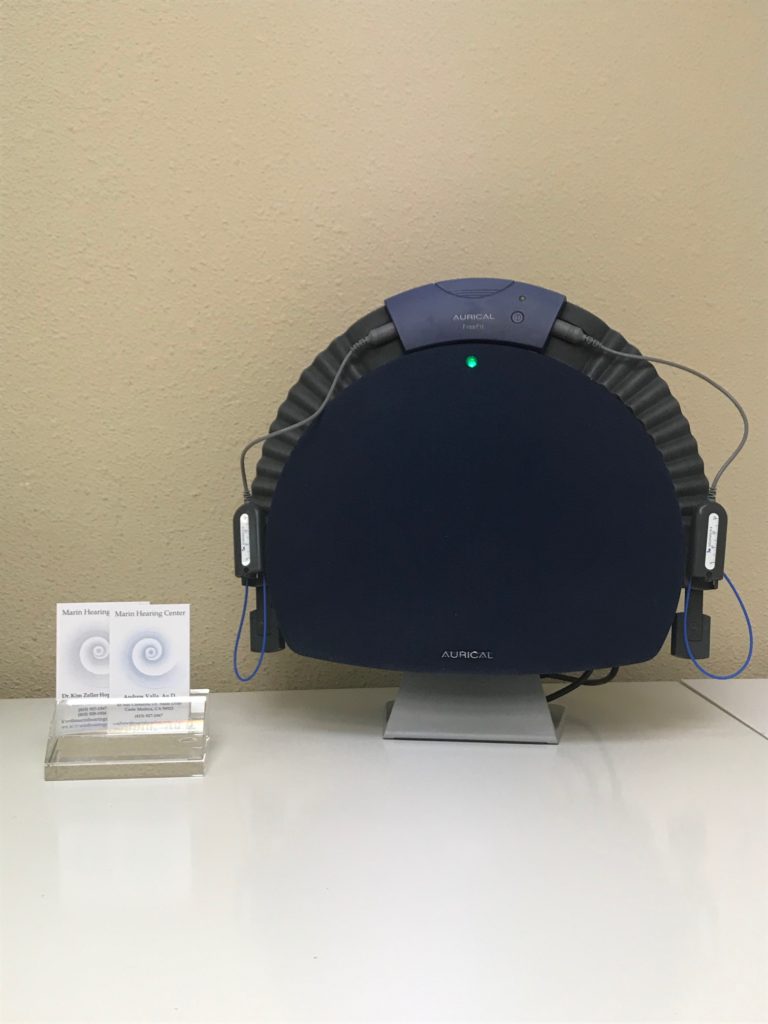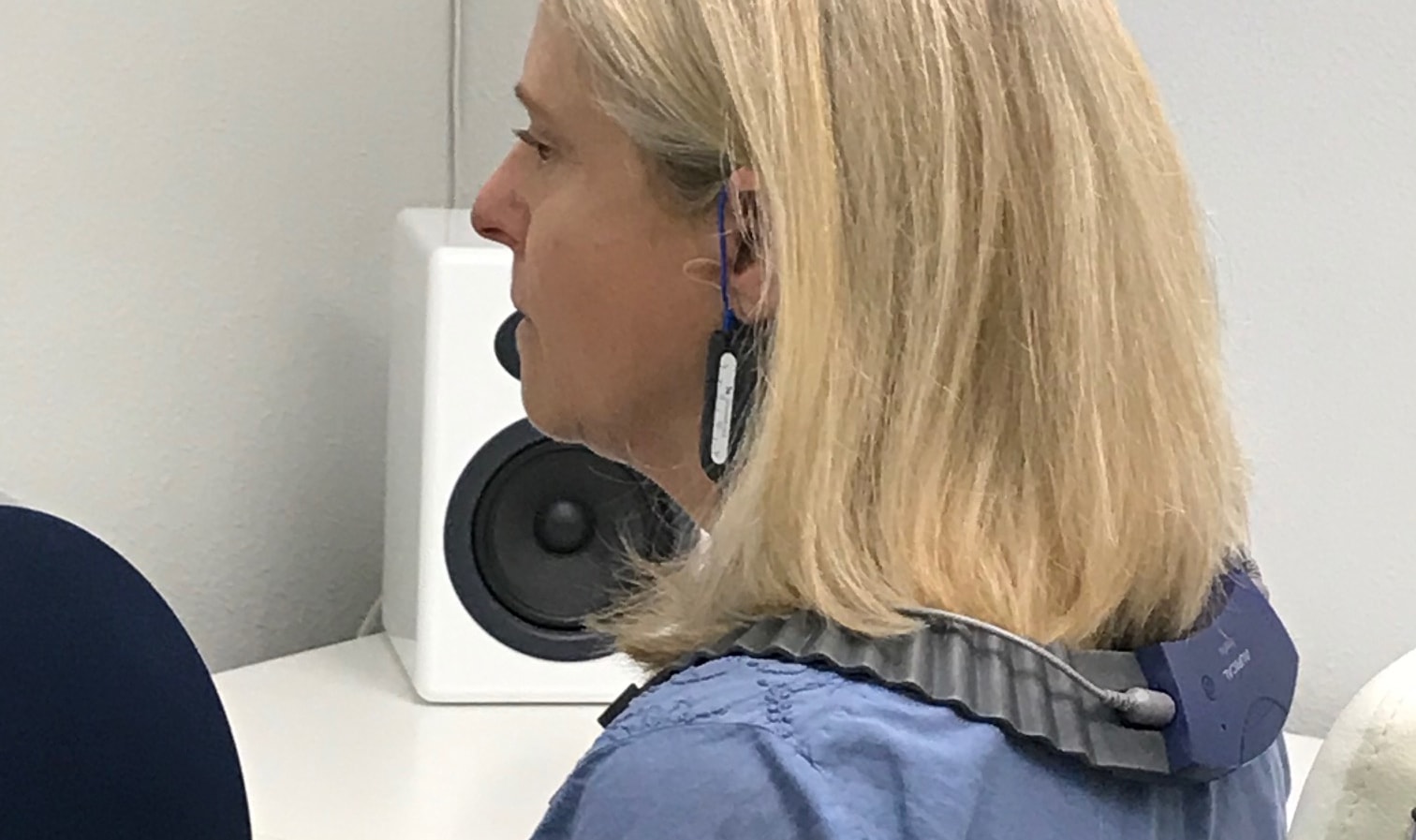Why we use Real Ear Measurements to verify hearing aid fittings at Marin Hearing Center?
Real Ear measurements (REM) positively affects patients’ benefit with hearing devices. We use it during our hearing aid fittings because we want you to achieve the best fit and experience with your hearing devices.
When you’re fitted with hearing aids, one of the many ways your audiologist may ensure your hearing aids perform properly is by conducting a test called Real Ear Measurement (REM). REM is one of the most valuable tools audiologists have at their disposal. It allows for a more precise, personalized fitting, based on the exact acoustic properties of your ears. In this post we’ll examine what REM is, the benefits of REM, and why it’s important to have REM performed when being fit with hearing aids.
What is Real Ear Measurement?

Real-Ear Measurement Equipment
Real-ear measurement equipment. Real Ear Measurement is a short test (5-20 minutes) conducted by an audiologist, which ensures that your hearing aids are providing the right amount of sound to your eardrum. Once your newly fitted hearing devices are programmed and in your ear, your audiologist will insert a tiny silicone probe tube into your ear canal, which sits very close to the eardrum. This probe is connected to a microphone which measures the sound delivered to the ear at your eardrum. It ensures the hearing device is providing the prescribed gain at each frequency.
One type of REM called Speech Mapping involves testing with a speech or speech-like signal. The hearing aid is adjusted so that the speech is amplified according to prescribed targets proven to be effective in improving speech audibility. While observing a real-time spectrum display of the speech in the patient’s ear canal the audiologist adjusts each frequency channel and loudness level. The aim is to maximize speech intelligibility and minimize loudness discomfort. Using a real speech signal to test a hearing aid has the advantage that speech enhancing features of the hearing device can be left active, and the effects of these features in normal use are included in the test.
What benefits does REM provide?
In short the benefit of REM is that it allows for more fine-tuned, accurately fitted hearing aids. A good fit can be achieved with or without a real-ear measurement (REM), however research data supports the use of REMs and it is considered best practice in verification of hearing aid fitting. When used by audiologists in the process of hearing aid fitting, real ear measures are the most reliable and efficient method for assessing the benefit provided by the hearing aids. This is most likely due to improved audibility (capable of being heard) and increased satisfaction with the overall fitting experience.
Real-ear measurements not only can be used to verify audibility, but also have been shown to contribute to a better experience for the patient, in turn achieving higher overall satisfaction.However, in most retail hearing centers patients are being fitted with hearing instruments without real ear verification measures.
Why it’s important to have REM performed when being fit with hearing aids.
The American Speech–Language–Hearing Association (ASHA) and American Academy of Audiology (AAA) recommend real ear measures as the preferred method of verifying the performance of hearing aids. Without REM measures, the audiologist has to rely on the fitting software created by the hearing aid manufacturer to determine the amount of gain that is applied at various frequencies. Rather than using an exact sound measurement at the ear drum with the device inserted and turned on, the software comes up with gain settings based on the audiogram and the selected fitting rule. The truth is that these software or factory settings are based on average sound levels in a typical ear canal. They are really just a “best guess” until actual measurements are made. Some recent studies have shown less than 12% of targets on the fitting software screen matched the actual measurements in the ear. Fitting software tends to overestimate the actual real-ear gain of hearing aids, especially in lower and higher frequencies. Visit Marin Hearing Center today for a Real Ear Measurement of your hearing devices. Our audiologists, Dr. Andrew Valla and Dr. Kim Hoppin, both use these measures when



